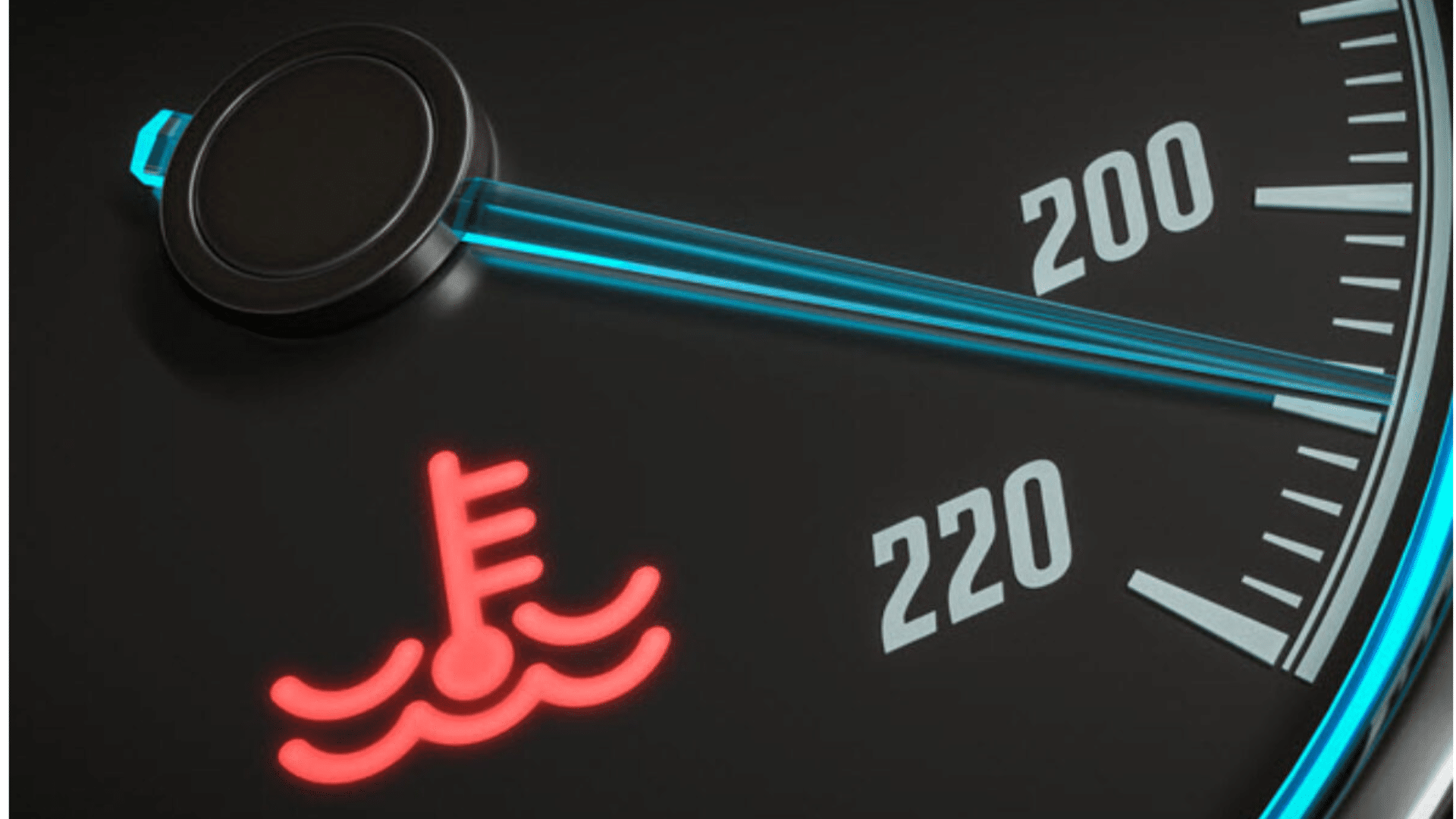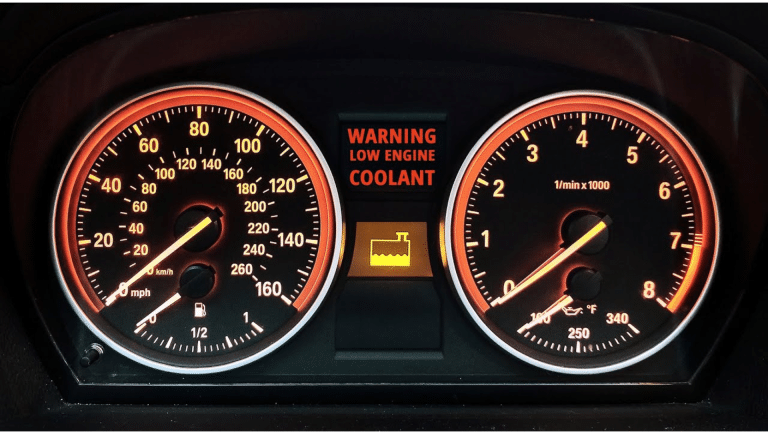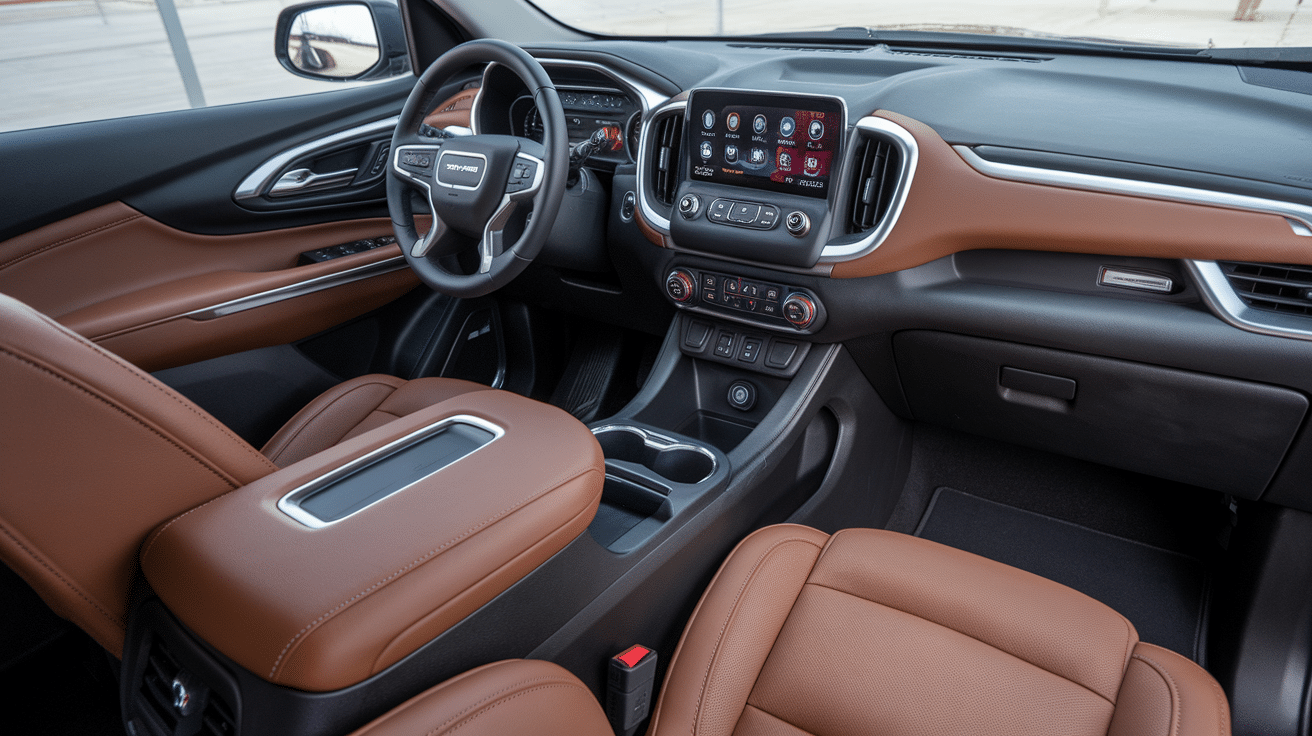If you’ve noticed the coolant light on your BMW dashboard, you’re likely wondering what it means and how to address it.
As a BMW owner, I know how important it is to ensure your car runs smoothly, and seeing this light can be worrying. In this blog,
I’ll walk you through the possible reasons behind this warning, how to check your coolant levels, and what steps you can take to fix the issue.
Ignoring this light can lead to serious engine damage, so it’s crucial to act quickly.
Understanding these causes and knowing how to respond will help you prevent potential damage to your engine and keep your BMW running at its best.
What Is the BMW Coolant Light?

The BMW coolant light is an important warning indicator that shows when your engine’s coolant temperature is too high or when coolant levels are low.
It helps protect your engine from overheating, which could lead to serious damage if ignored.
This light usually appears as a thermometer or a symbol resembling a cooling fan.
It’s crucial to address this warning immediately to prevent costly repairs and engine problems.
How to Check Coolant Levels in a BMW?
To check the coolant levels in your BMW, follow these steps:
- Allow the engine to cool down: Never attempt to open the coolant reservoir when the engine is hot. Wait for it to cool before proceeding to avoid burns or injury.
- Locate the coolant reservoir: The coolant reservoir is typically a transparent plastic tank with markings indicating the minimum and maximum levels.
- Inspect the coolant level: Check if the coolant level is between the minimum and maximum marks. If it’s too low, this could be why your coolant light is on.
- Top off if necessary: If the coolant level is low, add the recommended type of coolant (usually a 50/50 mix of water and antifreeze). Ensure that you’re using the correct coolant for your BMW model.
- Check for leaks: If the coolant level keeps dropping despite topping it off, it may indicate a leak in the system. It’s important to have your vehicle inspected by a mechanic if this happens.
Reasons Your Coolant Level Might Be Low
Several factors can cause your BMW’s coolant levels to drop. Here are some of the most common:
- Leaking Coolant System: If there’s a leak in your radiator, hoses, or water pump, coolant can escape, causing the level to drop. Leaks are often the main culprit behind persistent coolant light warnings.
- Evaporation: Over time, coolant can evaporate naturally, especially if your vehicle is frequently exposed to high temperatures. This slow loss of coolant can gradually trigger the warning light.
- Faulty Coolant Cap: A damaged or improperly sealed coolant cap can allow coolant to escape. If the cap is cracked or loose, it may not keep the system sealed properly, causing a drop in coolant level.
- Engine Overheating: If your engine runs too hot for any reason, it can cause the coolant to evaporate faster than normal, leading to low coolant levels. This could also signal that your cooling system isn’t working effectively, which might require further inspection.
- Damaged Radiator or Hoses: Any damage to the radiator or hoses could cause coolant to leak. This could be from wear and tear or external impacts, so it’s worth inspecting these parts regularly.
Types of BMW Coolant Lights
BMW coolant lights come in different types to indicate varying levels of concern. A yellow or orange coolant light signals a low coolant level, while a red coolant light warns of an overheating engine.
Coolant Temperature Warning Light
Symbol: A thermometer symbol or a red warning light.
Meaning: This light indicates that the engine is overheating, and the coolant temperature is too high. It’s a serious warning that requires immediate action to prevent potential engine damage.
Coolant Level Warning Light
Symbol: A blue or yellow icon resembling a cooling fan or water droplet.
Meaning: This light signals low coolant levels. It could be caused by evaporation over time or a leak in the system. While not as urgent as the temperature warning, it still requires timely attention to avoid overheating.
Quick Comparision
| Warning Light | Symbol | Severity | Action Required | Potential Consequences |
|---|---|---|---|---|
| Coolant Temperature Warning | Thermometer symbol or red warning light | High | Stop the vehicle immediately and let it cool down. | Potential engine damage, overheating issues |
| Coolant Level Warning | Blue or yellow icon resembling a fan or water droplet | Medium | Check coolant level and top up if necessary. | Overheating, reduced engine efficiency |
What to Do If the BMW Coolant Light Comes On?
If the coolant light comes on in your BMW, it’s important to take immediate action to prevent engine damage. Here’s what you should do:
- Pull Over Safely: As soon as you notice the coolant light, pull over to a safe location. This will help prevent any further damage to your engine due to overheating or low coolant levels.
- TurnOff the Engine: Once you’re safely stopped, turn off the engine to let it cool down. Never open the coolant reservoir when the engine is hot to avoid burns or injury.
- Check the Coolant Level: After the engine cools down, open the hood and locate the coolant reservoir. Check if the coolant level is low. If it is, you can top it off with the appropriate coolant.
- Add Coolant If Necessary: If the coolant level is below the minimum mark, add the recommended coolant for your BMW model. Make sure to use the correct type of coolant (either BMW-specific or OEM).
- Inspect for Leaks: While checking the coolant, also look for visible signs of leaks around the hoses, radiator, or water pump. Leaks are a common reason for low coolant levels and should be fixed as soon as possible.
- Allow Engine to Cool: If the light came on due to the engine overheating, allow the engine to cool for about 20-30 minutes before restarting it. If the engine temperature gauge is high, this step is crucial to avoid further damage.
- Restart the Engine: Once the engine has cooled and you’ve topped off the coolant, start the engine again. Monitor the temperature gauge and check if the coolant light turns off. If it does, you can proceed.
- Seek Professional Help: If the coolant light stays on or if you notice persistent issues with coolant levels, overheating, or leaks, it’s time to consult a professional mechanic.
Preventing Future Coolant Light Issues
To avoid facing the BMW coolant light warning in the future, it’s important to take proactive steps in maintaining your vehicle’s cooling system. Here are some key tips to help prevent future issues:
1. Regular Maintenance
Make it a habit to check your BMW’s coolant levels every few months or before long trips. Regular checks ensure you catch low coolant levels before they trigger the coolant light.
Periodically inspect the cooling system, including the radiator, hoses, and coolant reservoir. Look for any signs of wear, leaks, or damage that could cause coolant loss.
Pay attention to your vehicle’s temperature gauge while driving. If the needle starts creeping towards the hot zone, it’s a sign that the engine might be overheating, and you should pull over safely.
2. Coolant Flushes
BMW recommends performing a coolant flush every 30,000 miles or every 3 to 5 years, depending on your model and driving conditions.
A coolant flush removes dirt, debris, and old coolant, ensuring that your engine stays cool and efficient.
Always use the manufacturer-recommended coolant for your BMW model. The wrong type of coolant can cause corrosion, blockages, and poor heat transfer, which can result in overheating or coolant system failure.
3. Inspect the Radiator, Hoses, and Cap
The radiator plays a crucial role in keeping the engine temperature regulated. Ensure it’s free of leaks or damage that could affect coolant flow.: Any cracks or holes in the radiator should be repaired or replaced immediately.
Rubber hoses can wear out over time, leading to leaks. Inspect all hoses connected to the radiator and coolant system. If you notice any cracks or bulges, they should be replaced.
The coolant cap helps maintain pressure in the system. A faulty or loose cap can cause coolant to escape. Regularly check that the cap is sealed properly and replace it if it’s damaged.
4. Keep an Eye on the Engine’s Performance
If you notice your engine is overheating, address it immediately. Common causes of overheating include a malfunctioning thermostat, a blocked radiator, or a broken water pump.
If you suspect any of these issues, have your car inspected by a mechanic to avoid long-term damage.
Conclusion
Understanding the causes of your BMW coolant light and taking proactive steps to maintain your vehicle’s cooling system can save you from costly repairs and engine damage.
Regularly checking coolant levels, performing coolant flushes, inspecting the radiator and hoses, and addressing overheating issues promptly will help ensure your BMW runs smoothly.
By staying on top of routine maintenance, you can keep your cooling system in top shape and avoid the frustration of a warning light.
If the coolant light persists or if you notice any unusual symptoms, don’t hesitate to seek professional help to keep your BMW performing at its best.








